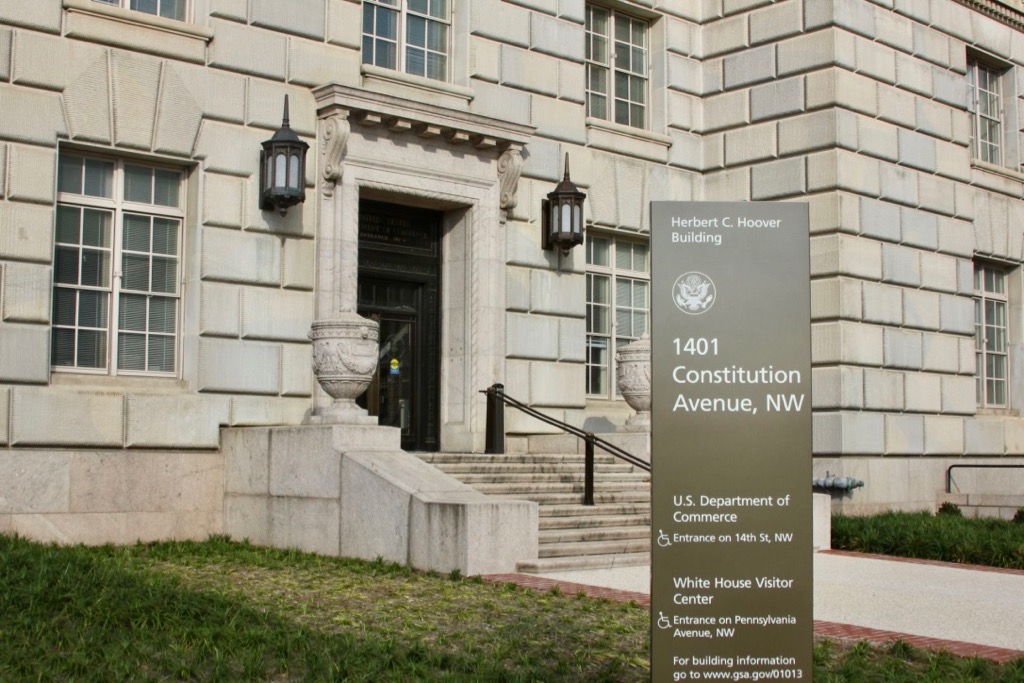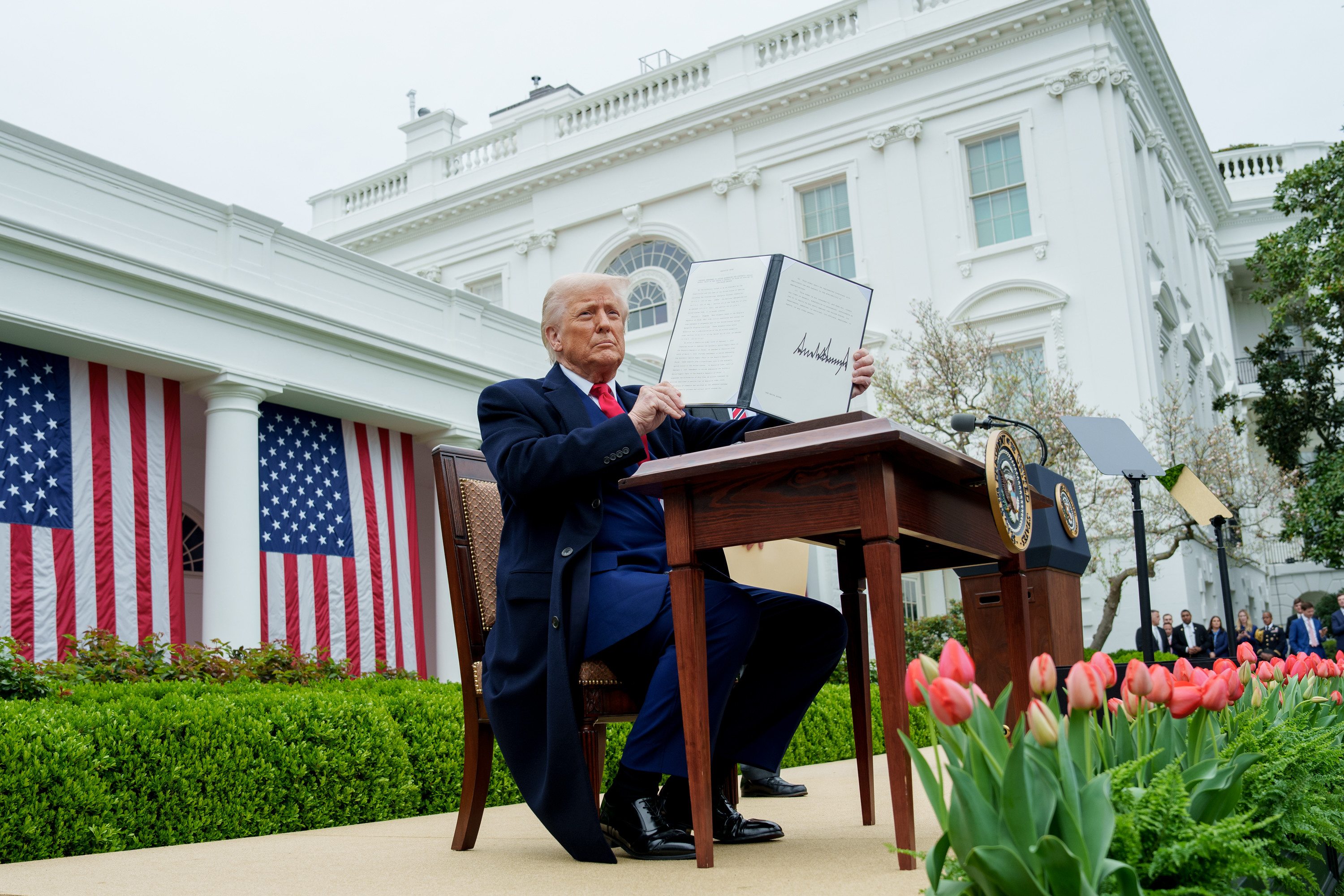Steel Protectionism Won’t Protect National Security
Late Jan. 11, the Department of Commerce issued a report to President Donald Trump detailing whether steel imports threaten U.S. national security. The president now has 90 days to decide how his administration will respond to the findings. A non-classified summary of the report will be published in the Federal Register after the president makes his decision.

Published by The Lawfare Institute
in Cooperation With

Late Jan. 11, the Department of Commerce issued a report to President Donald Trump detailing whether steel imports threaten U.S. national security. The president now has 90 days to decide how his administration will respond to the findings. A non-classified summary of the report will be published in the Federal Register after the president makes his decision. If Commerce has provided an affirmative determination, rather than helping our national security objectives, the president’s subsequent remedies would harm our security interests and jeopardize alliances.
Since Adam Smith published “The Wealth of Nations” in 1776, no issue has united economists like free trade. Yet even Smith, free trade’s most notable evangelist, understood that when trade jeopardizes security, the free flow of goods across borders should yield. With a strong theoretical case for restricting trade in times of emergency, Section 232 of the Trade Expansion Act of 1962 and Article XXI of the General Agreement on Tariffs and Trade (GATT), a mechanism for national security related trade restrictions within the World Trade Organization framework, provide the president with such authority. Sparingly invoked, the authority has thus far been used judiciously both in domestic trade cases and at the WTO. That could change in the coming months as Trump, long a critic of China’s practices regarding steel exports, considers whether to restrict steel imports in the name of national security.
There is no question that steel, a material used in the production of weapons and military systems, is necessary for America's military superiority, but is it realistic to expect that foreigner producers would withhold supplies in a true national security emergency? In short, no. A close examination of our suppliers, treaties and other agreements, as well as a review of current geopolitics, makes clear that steel imports do not jeopardize national security. In fact, there is reason to believe that this investigation is, instead of a sober analysis of consequences for military production, a highly politicized affair. While outside of the scope of this commentary, the Trump administration is conducting several other investigations into China’s trade practices, as well as a high-profile dispute at the WTO involving the country’s designation as a nonmarket economy. These investigations, alongside well-documented rhetoric opposing Chinese trade practices, suggest politics motivate this administration’s use of trade levers.
But first, why do steel imports not pose a national security threat? Steel that the military and defense establishment use constitutes only a small fraction of total domestic steel consumption. Shortly after the attacks on Sept. 11, the Commerce Department, under the authority of the same statutory provision, investigated whether iron ore and semi-finished steel imports were a threat to national security. As part of that investigation, the Defense Department estimated that it needed about 325,000 net tons of finished steel products per year—less than 0.3 percent of the domestic industry’s output for the year. With protracted wars in the Middle East, that number has surely increased, but only about 3 percent of steel shipped domestically in 2016 was used for national defense and homeland security. In the event that the U.S. enters into a major international conflict requiring a larger share of domestic steel, we could increase domestic steel production, reallocate a greater percentage of the domestic steel for the Pentagon or increase imports from allied countries to meet our military steel needs.
The United States also has a number of options to source steel from allies and non-hostile trading partners. In fact, of the top ten exporters of steel to the United States in 2016, only China could be considered a potential threat. Moreover, that threat becomes far less pressing when one considers how small a share China has of overall U.S. steel imports. China is only the source of 3 percent of American steel imports. Otherwise, 60 percent of imported steel mill products come from six other countries, none of which could plausibly be considered a threat to national security. According to the most recent available data from the International Trade Administration, between January and October 2017, the top exporter of steel to the United States is Canada, which accounted for 16 percent of imports during this period; Brazil, which accounted for 13 percent; South Korea, which accounted for 10 percent; Mexico, which accounted for 9 percent; Turkey, which accounted for 6 percent; and Japan, which accounted for 5 percent. Russia, which supplied 2.3 percent of imported steel in 2016, is the 11th largest exporter to the United States and could also be considered a strategic threat to the U.S. and its NATO allies.
Many of the United States’ top suppliers are already covered by free trade agreements such as NAFTA, by bilateral free trade agreements such as our pact with South Korea, or are members of the NATO, which requires its members to defend American security and provide assistance during emergencies. This is consistent with the findings from the Section 232 investigation from 2001, in which the Defense Department found that even if national security necessitated more steel than was produced domestically, the supplies would come from “diverse and reliable trading partners.”
Not only does the United States maintain solid trading and strategic relationships with its largest steel suppliers, the Defense Department has a number of tools at its disposal to receive supplies necessary for national security. First, the United States has a number of defense procurement memorandums of understanding with our allies. These obligate both parties to remove impediments to the purchase and procurement of items necessary for national security. Likewise, the Defense Department has a number of “security of supply” arrangements that are intended to “ensure the mutual supply of defense goods and services.” These bilateral agreements with allied states allow the Defense Department “to request priority delivery for DoD contracts, subcontracts, or orders from companies in these countries.” In other words, it is simply implausible that the United States would be unable to receive supplies of steel necessary for national security.
If Commerce finds that steel imports are now a threat to our security, when did this become the case? Under current law, the Pentagon prepares an annual report to Congress on the “national security strategy for the national technology and industrial base.” As part of that survey, the Defense Department is required to examine the defense supply chain to ensure the military can meet its national security objectives. Recent reports from 2013-2015 show little concern about steel sources. If the United States were threatened by steel imports, these would surely highlight the problem. Their silence on the matter speaks volumes.
But what has changed in the last year? The occupant of the Oval Office. Throughout the 2016 presidential campaign, then-candidate Trump appealed to blue collar workers in the rust belt by promising to reverse the supposed decline in manufacturing. Vowing to get tough on foreign countries, Trump’s campaign promises turned into a governing philosophy with the appointments of Secretary Wilbur Ross to run the Commerce Department and Robert Lighthizer to serve as United States Trade Representative, followed by the Section 232 investigation. Yet neither the history of trade nor the current circumstances of steel imports support a national security-based restriction.
What’s more, America’s national security objectives would be injured by the implementation of Section 232 remedies. At the moment, the North Korean nuclear and missile programs pose an acute national security threat to the U.S. The administration is currently taking diplomatic steps, putting sanctions in place and conducting shows of force against the Kim Jong Un regime. It is also making overtures towards to China to gain support for its pressure campaigns, having calculated that China is the key to dealing with North Korea. If the administration makes the national security designation, due to Trump’s frequent critiques of Chinese steel trade practices, China will likely interpret the designation as directed at them. This could interfere with our attempts to gain cooperation on North Korea.
While there is a strong general theoretical case for restricting trade when it conflicts with national security, that’s not the case with respect to steel imports in this instance. The administration should prioritize real national security threats, not justify politically motivated protectionism under the guise of national security.






